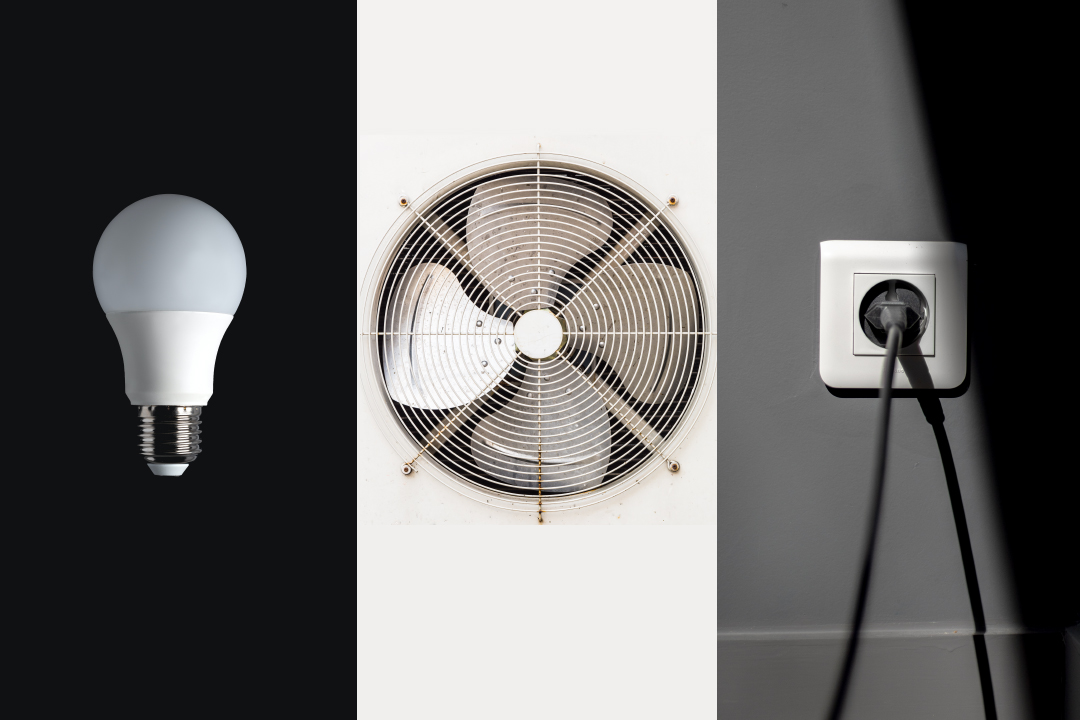Buildings have been the primary consumers of energy, and the primary producers of atmospheric carbon dioxide for many a year. It’s got to the point now where energy efficiency measures are no longer a nice-to-have for buildings; but a need-of-the-hour.
Energy efficient solutions don’t just help fight against climate change. They also help cut back on energy and maintenance costs, and establish a competitive advantage. And no, they don’t always require a hefty initial investment.
In the following article, let’s begin by explaining what constitutes an energy efficiency measure. Then, we will look at 5 of the most profitable energy efficiency measures, and how to make buildings more energy-efficient.
What (really) are Energy Efficient Measures?

Any machine, software, system, practice, or retrofit that leads to a general reduction in energy usage, without significantly impacting level-of-service can be called an energy efficient measure. E.g., implementing a portfolio-wide policy of using energy-efficient appliances, or undergoing a smart retrofit for better energy reporting.
5 of the Most Profitable Energy Efficiency Measures
While there are other ways to make buildings energy efficient, these 5 are the most profitable and easiest to implement, in our opinion:
1. Comparing Your Building's Energy Performance to Standards:
To gauge your building's energy performance, it's essential to compare it to the standards for your building type. Standards vary among building types, and by comparing your building's energy usage against industry standards, you can determine if it's consuming too much energy compared to similar buildings in terms of size, age, and location. Establishing a baseline and different thresholds for energy consumption allows you to set alarms and notifications that identify reasons for overconsumption and take corrective actions.
At ClevAir, we provide our customers with the tools they need to gain insight into their building's energy usage, enabling them to make easy comparisons with local standards. In addition, ClevAir offers actionable insights and real-time optimization of ventilation systems, resulting in energy savings.
Also read : How Much Energy Usage is Normal for Your Building?
2. Visualising the energy you spend

Understanding your building's energy consumption and usage patterns is crucial for identifying areas of improvement and implementing effective energy-saving measures. While energy monitoring tools can be helpful, ClevAir provides a user-friendly dashboard that not only displays your building's energy consumption but also provides data on energy savings and CO2 emissions. With this information at your fingertips, you can make informed decisions about your energy usage and take actionable steps to increase your building's energy efficiency.
3. Making ventilation smarter by automating it (No matter if you have BMS)
HVAC and lighting are responsible for a major part of a building's energy consumption. There are various ways to optimize these systems and reduce energy usage. For instance, ventilation can be automated based on occupancy, weather, CO2 levels, and other factors, rather than following static setpoints. This approach can result in significant energy savings.
ClevAir offers integration with a variety of ventilation systems, whether or not they have BMS, to enable these real-time adjustments. By automating ventilation, ClevAir helps its customers optimize energy use and save money on their utility bills while maintaining a comfortable indoor environment.
4. Setting alarms to track equipment performance
Equipment malfunctions and inefficient operations can result in excessive energy consumption and high energy bills. Fortunately, advancements in technology and sensors allow for the timely detection of such issues. At ClevAir, our users receive email notifications when equipment malfunctions, deviations, or high levels of radon are detected. This early warning system enables users to take swift action before such issues lead to costly downtime or increased energy consumption.
5. Tracking building energy usage trends over time.
By keeping a record of your building's energy consumption over a longer period, you can identify what factors are influencing your building's energy usage. For instance, a broken piece of equipment could cause the ventilation system to use more energy, or the weather could have an impact. With ClevAir's dashboard, you can easily monitor and analyze energy usage trends over time, and compare performance across different buildings in your portfolio. This data can help you make more informed decisions about energy efficiency investments and identify opportunities to further reduce your energy consumption.
How Impactful Can Energy Efficiency Measures Be?
Implementing even the most basic energy efficient measures can yield long-term, tangible benefits.
Our customers who have prioritised optimising their ventilation systems have reported an average of 20% energy savings. Here are some of their comments on the positive impact of these measures:
The potential for energy savings through optimization of ventilation depends on both the type of building and measures that have been taken in the past.
Contact us for a non-binding assessment of what ClevAir can potentially contribute to your building(s).